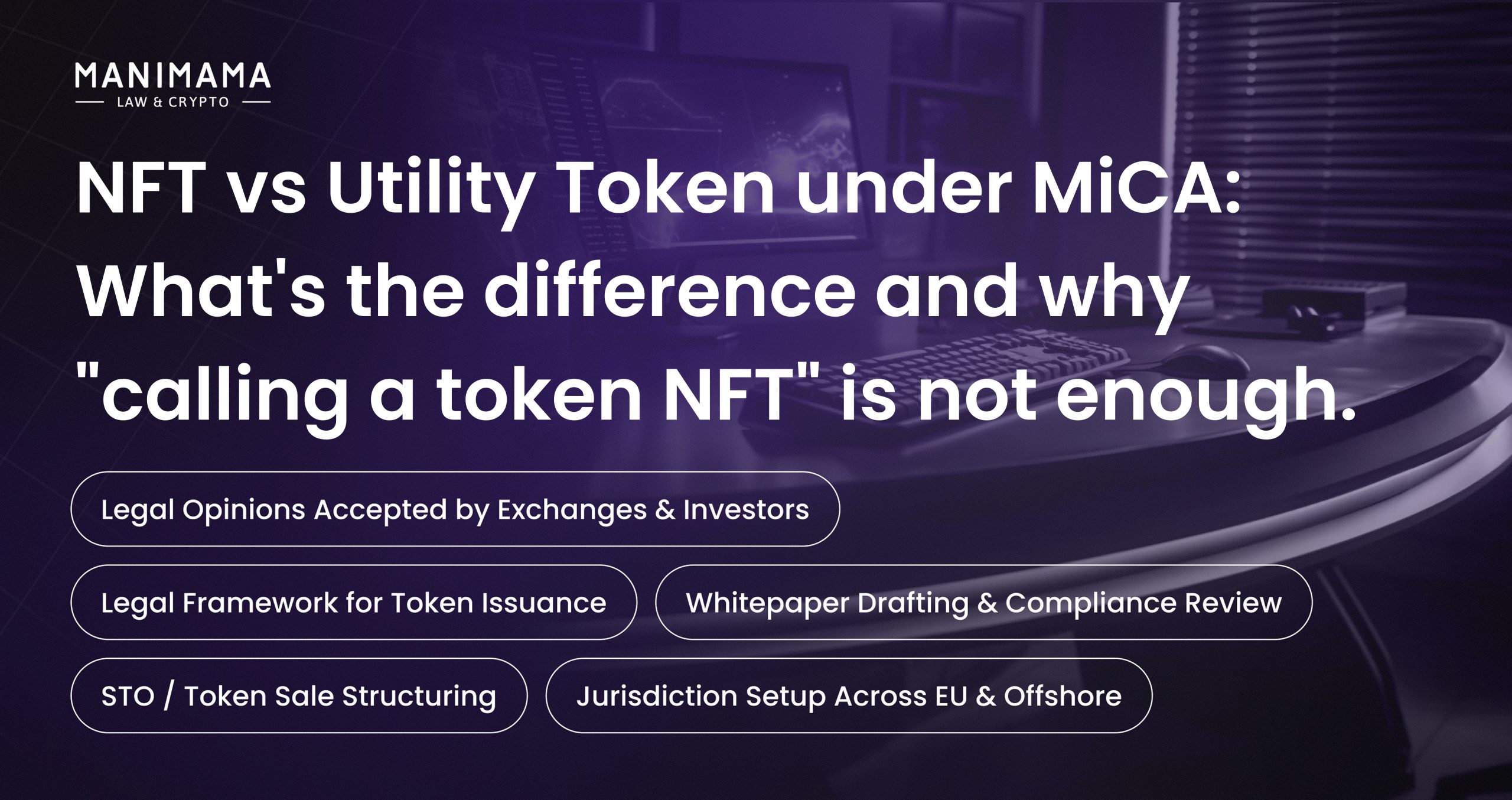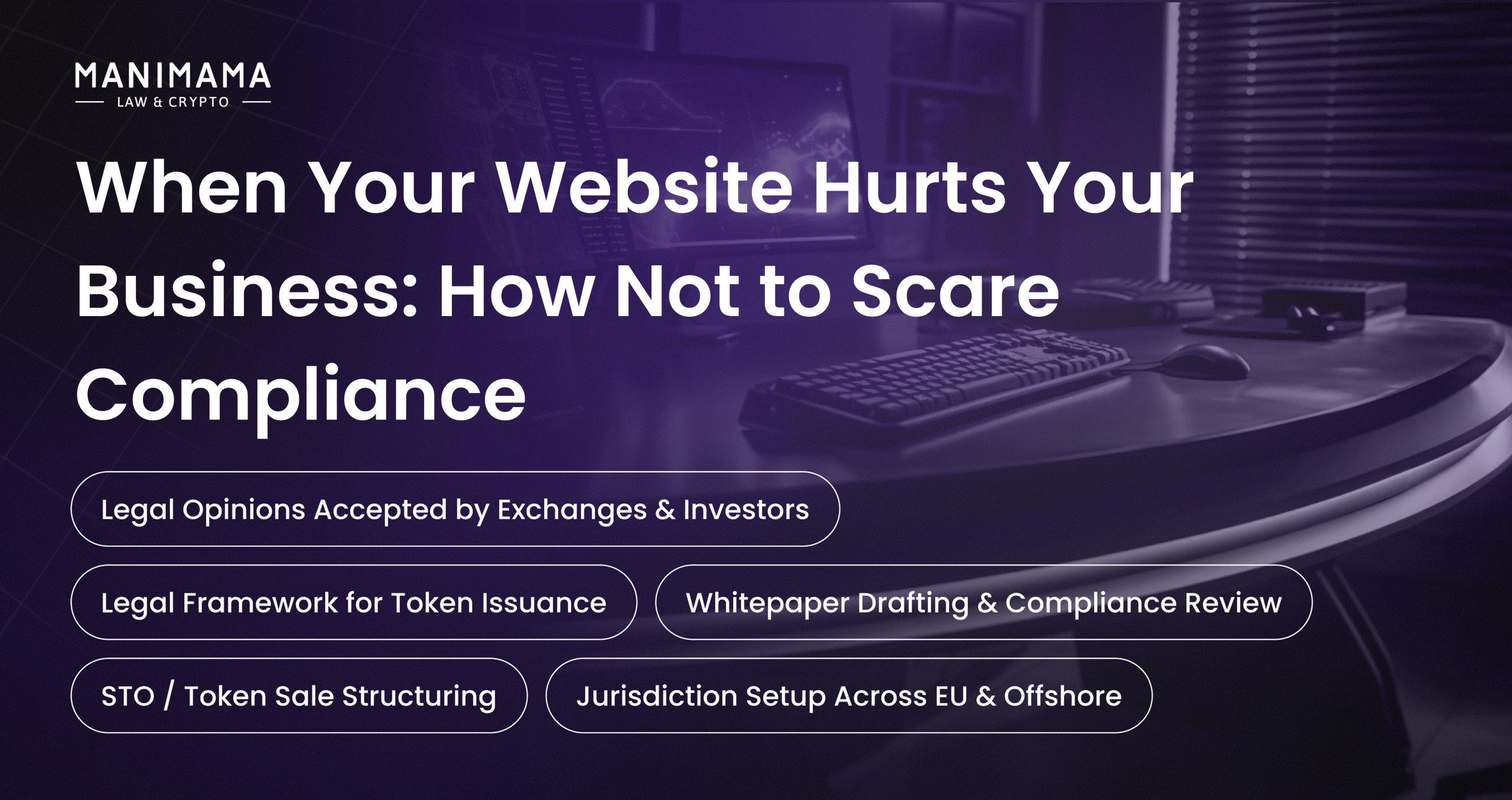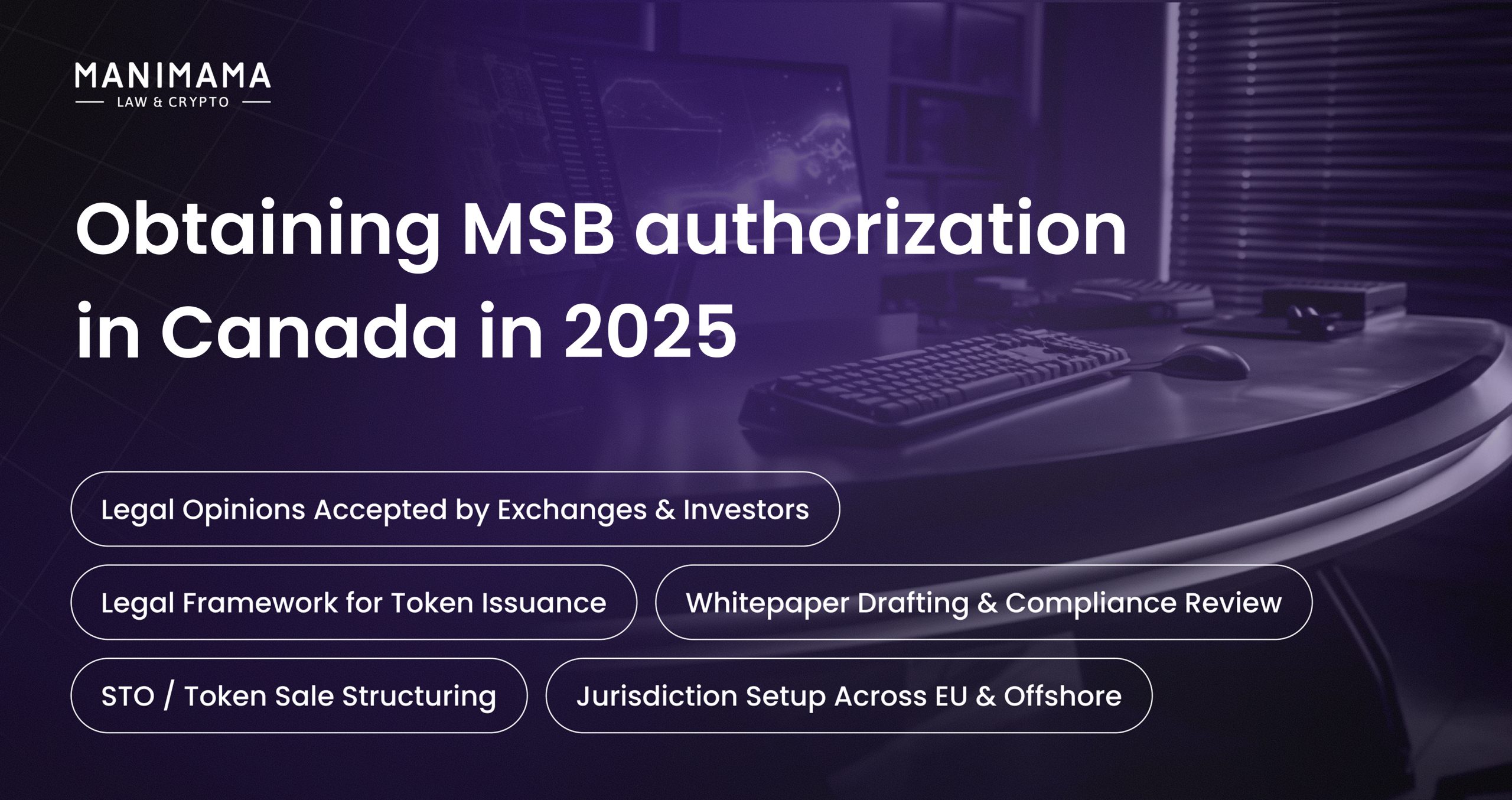Since the introduction of Regulation (EU) 2023/1114 on Markets in Crypto-Assets (MiCA), one of the most common misconceptions in the tokenization space has been that any token labeled as an NFT is automatically exempt from regulation. However, MiCA introduces clear criteria to determine whether a token is truly “unique and non-fungible” and whether it actually functions as a utility token or even an investment instrument.
This question is not theoretical. Previously, hundreds of projects in the EU used the “we sell NFT” model, actually collecting money from the public without a license, without a prospectus, without a whitepaper in a format that would require a description of the risks, and without minimum guarantees of buyer protection. That is, NFTs were very often used as a way around traditional restrictions on public capital raising. This is exactly the question that the European supervisory authorities are called upon to address.
In fact, it is not the name that determines the legal status of a token, but its functional essence, the rights it grants, and the economic purpose of its issuance. Other questions become important:
- whether the token is economically interchangeable;
- whether it is sold as access to a service;
- whether it creates expectations of future income in the investor.
It is the answer to these questions that determines whether the token will be considered utilitarian or NFT. In fact, it is not the name that determines the legal status of a token, but its functional essence, the rights it grants, and the economic purpose of its issuance.
Incorrect token classification now carries direct legal consequences not only for the company, but also for its directors and individuals who publicly sell or promote the token. The sale of a mass collection of “NFTs”, which is actually a utilitarian or investment product, can qualify as a public offering of a regulated asset without permission. This means fines, blocking of the offer and even personal bans on managing such projects in the EU. That is, the issue of token classification today is also a matter of personal liability of the founders.
MiCA Legal Classification of Cryptoassets.
EU Regulation No 2023/1114 on Markets in Crypto-Assets (MiCA) introduces for the first time at EU level a comprehensive legal classification of crypto-assets.
According to Article 3(1)(5), a crypto-asset is a digital representation of value or a right that can be transferred and stored electronically using distributed ledger technology (DLT) or similar technology.
This definition is technologically neutral and covers a wide range of tokens available on the market, from stablecoins and utility tokens to NFT-like assets and governance tokens.
MiCA further distinguishes four main categories of crypto-assets, each of which is subject to its own regulatory regime.
- Asset-Referenced Tokens (ART). ART issuers are subject to strict prudential supervision, management and reserve requirements under Title III of MiCA.
- E-Money Tokens (EMTs). Functionally similar to electronic money, they can only be issued by banks or electronic money institutions (EMIs) licensed in the EU.
- EMT issuers must guarantee the redemption of tokens at face value and maintain segregated reserves to ensure stability.
- Utility Tokens, which are designed to provide digital access to a good or service created or provided by the issuer. Utility tokens do not grant ownership rights, profit participation or property claims to the issuer. However, if such tokens are offered publicly, the issuer is required to publish a whitepaper and comply with transparency and marketing requirements.
Other Crypto-Assets MiCA also includes a residual category — “other crypto-assets”, all digital tokens that are not classified as ART, EMT or utility tokens. MiCA classifies cryptoassets according to their economic function and the rights they confer, not by technical form or marketing name.
The principle of “Substance over Form”.
The European Securities and Markets Authority (ESMA) notes that it doesn’t matter what you call an NFT token, fan token, membership pass, utility token, it only matters what it does in reality and what rights it gives to the owner. The classification of a token should be based on its economic characteristics and rights, regulation should be the same for assets with the same economic nature, regardless of the wrapper.
This is necessary in order to avoid situations where a project tries to avoid licenses by simply renaming the product and at the same time provide investor protection so that crypto assets with a similar function are regulated consistently across the EU.
What is a Utility Token according to MiCA?
According to Article 3(1)(9) of the MiCA, a utility token is a crypto-asset intended to provide digital access to a good or service created or provided by the issuer. Such a token has an exclusively functional purpose and provides the user with access to a specific platform, application or digital content.
A utility token does not grant ownership rights or a share in the issuer’s profits, does not perform a payment function and is not a financial instrument. At the same time, if such a token is offered publicly, the issuer is obliged to publish a crypto-asset whitepaper in accordance with Articles 55–57 of the MiCA and to comply with transparency standards.
Many issuers call their tokens utility, although in fact they perform mixed functions – for example, they provide the opportunity to vote, participate in profits or speculative trading. In this case, the token already goes beyond the boundaries of simple “access to the service” and moves into the plane of financial instruments or “other cryptoassets”. That is why when designing a utility token, it is necessary to legally fix in advance its exclusively functional purpose, clearly prescribe user rights and avoid elements that create expectations of profit or investment benefit. This not only ensures compliance with MiCA, but also builds trust in the project at the level of regulators and investors.
The key feature of a utility token is its fungibility. Each token of a certain series has the same value and provides the same rights to users.
What are NFTs?
The MiCA Regulation defines exceptions for NFTs in Article 2(3) and the preamble (Recital 10). According to them, the Regulation does not apply to unique and non-fungible tokens that confirm the authenticity or ownership of a specific unique item, whether digital or physical. In other words, if a token truly represents a unique asset, for example, a specific work of art or an individual collectible, it is not considered a cryptoasset within the meaning of MiCA.
However, if NFTs are issued in large quantities or provide the same rights and functions, they effectively become interchangeable. In such cases, these tokens fall under MiCA as utility tokens or “other cryptoassets.”
For example, a client has a collection of 10,000 NFTs, each of which provides access to the same online platform or future bonuses, these would not be considered unique tokens, as they have the same function and are interchangeable and therefore qualify as utility tokens.
ESMA offers an approach that requires checking the real behavior of the token on the market, and if the tokens are issued in series (1000, 10,000, 100,000 pieces), have the same utilitarian function (access to the same service, discount, participation in the game, access to a closed channel), have the same economic function (right to profit, share of income, future payments), then from the point of view of the regulator they are interchangeable, even if each has a unique tokenID or a different picture.
That is, this is a regular crypto-asset that falls under either MiCA as a utility token or another crypto-asset, or is generally a financial instrument under MiFID II. What is important is the uniqueness of the right or asset that this token represents. If the right is the same as that of other investors’ tokens, then it is not unique.
In practice, if a project issues a series of NFTs that fall within the MiCA scope but fails to comply with disclosure or authorization requirements, the issuer may face administrative penalties and reputational risk. MiCA empowers competent authorities to suspend public offerings, order amendments of misleading whitepapers, and impose fines. Therefore, NFT issuers should conduct a MiCA qualification analysis prior to launch.
How did this change the NFT market?
Before MiCA came into force, many crypto projects actively used NFTs as a way to avoid regulation, because it was enough to add a phrase to the whitepaper that these are non-fungible tokens (NFTs), and therefore the product is not subject to financial regulation and it was possible to launch sales without a license, without a whitepaper according to EU requirements and without consumer protection standards.
NFTs served as a wrapper for many crowdfunding campaigns, where investors received “unique” tokens with the promise of future profits; pre-sale of services or memberships; investments in tokenized assets, such as real estate, mining or collectibles.
All of these models formally looked like “unique NFTs”, but economically worked as utility or investment tokens. This is what MiCA is trying to eliminate.
MiCA explicitly requires utility tokens to publish a crypto-asset whitepaper (Articles 55–57), a fair description of the token’s functions, risks and user rights, and notification to the national competent authority before a public offering.
An investment NFT, which, although it has the term NFT in its name, promises the owner income, a share of profits or the right to future cash flows and from the regulator’s point of view, such an economic model may already fall under MiFID II regulation and be considered a financial instrument. In this case, the token is a security in essence, even if it is technically recorded as an NFT on the blockchain.
The right strategy for issuing a token does not depend on the marketing name of the asset, but on what economic function it actually performs. The “let’s call it an NFT and avoid regulation” approach no longer exists in the EU. After the entry into force of MiCA, the regulator proceeds not from the form, but from the content, and if the token works as a utility token, then it is regulated as such, only the token that truly reflects a unique right to a specific individual asset can remain outside MiCA as an actual NFT.
The most important thing when structuring a token is to show a transparent model of its use, clearly describe what rights the owner receives, and explain how the funds and interests of users are protected. This provides legal certainty, reduces regulatory risk and increases investor confidence. In essence, competitive advantage is now not built on the ability to prove that the token is qualified, honestly described and meets the requirements of MiCA.
So the question is no longer whether you can call it an NFT, but whether you can prove that this token is truly unique, a single asset, and is designed according to the rules. This is what decides whether you will be admitted to the market.
At Manimama Law Firm, we help businesses navigate this new reality effectively. We prepare documentation, manage application processes, and develop crypto compliance strategies that are built for the long term.
When considering your jurisdiction, you’re choosing a reputation that works in your favor.
Our Contacts
If you want to become our client or partner, feel free to contact us at support@manimama.eu.
Or use our telegram @ManimamaBot and we will respond to your inquiry.
We also invite you to visit our website: https://manimama.eu/.
Join our Telegram to receive news in a convenient way: Manimama Legal Channe










